- About MAA
- Membership
- MAA Publications
- Periodicals
- Blogs
- MAA Book Series
- MAA Press (an imprint of the AMS)
- MAA Notes
- MAA Reviews
- Mathematical Communication
- Information for Libraries
- Author Resources
- Advertise with MAA
- Meetings
- Competitions
- Programs
- Communities
- MAA Sections
- SIGMAA
- MAA Connect
- Students
- MAA Awards
- Awards Booklets
- Writing Awards
- Teaching Awards
- Service Awards
- Research Awards
- Lecture Awards
- Putnam Competition Individual and Team Winners
- D. E. Shaw Group AMC 8 Awards & Certificates
- Maryam Mirzakhani AMC 10 A Awards & Certificates
- Two Sigma AMC 10 B Awards & Certificates
- Jane Street AMC 12 A Awards & Certificates
- Akamai AMC 12 B Awards & Certificates
- High School Teachers
- News
You are here
Mathematical Treasure: Cavalieri’s Geometria indivisibilibus
The early 17th-century Italian mathematician and disciple of Galileo, Bonaventura Cavalieri, developed a method of indivisibles for finding areas and volumes as a pre-cursor to the definite integral. He was a member of the Jesuati religious order (not to be confused with the Jesuits) and a mathematics professor at the University of Bologna for almost 20 years. According to Howard Eves, who considered the publication of Cavalieri’s Geometria indivisibilibus one of the “Great Moments in Mathematics,” “Cavalieri was one of the most influential mathematicians of his time, and the author of a number of works on trigonometry, geometry, optics, astronomy, and astrology." He was among the first to recognize the great value of logarithms and was largely responsible for their early introduction into Italy. But his greatest contribution to mathematics was a treatise, Geometria indivisibilibus, published in its first form in 1635, devoted to the pre-calculus method of indivisibles. The image below is the title page of this work, Geometria indivisibilibus continuorum nova quadam ratione promota (Geometry by indivisibles of the continua advanced by a new method).

The work is divided into seven books (libri). The next images show the beginning pages for each of the seven sections.
Book I: 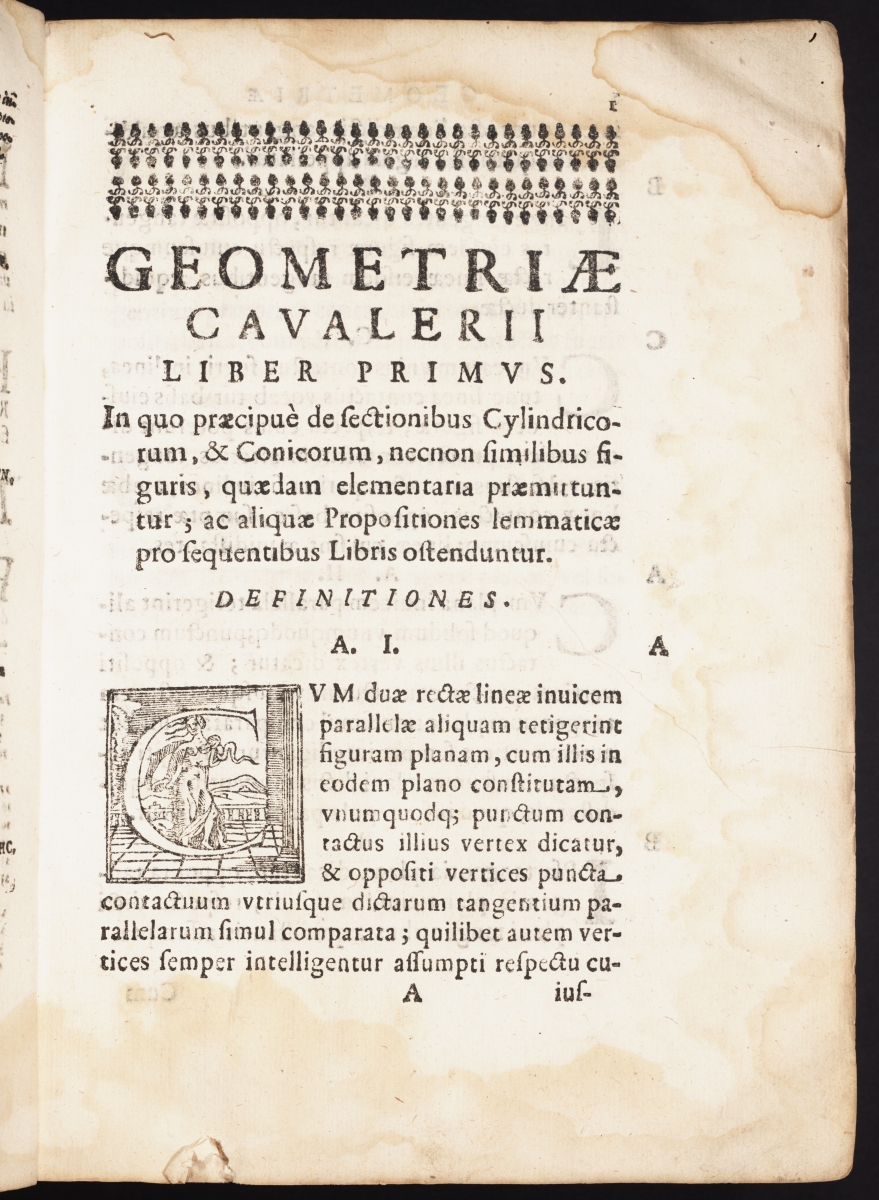 Book II:
Book II: 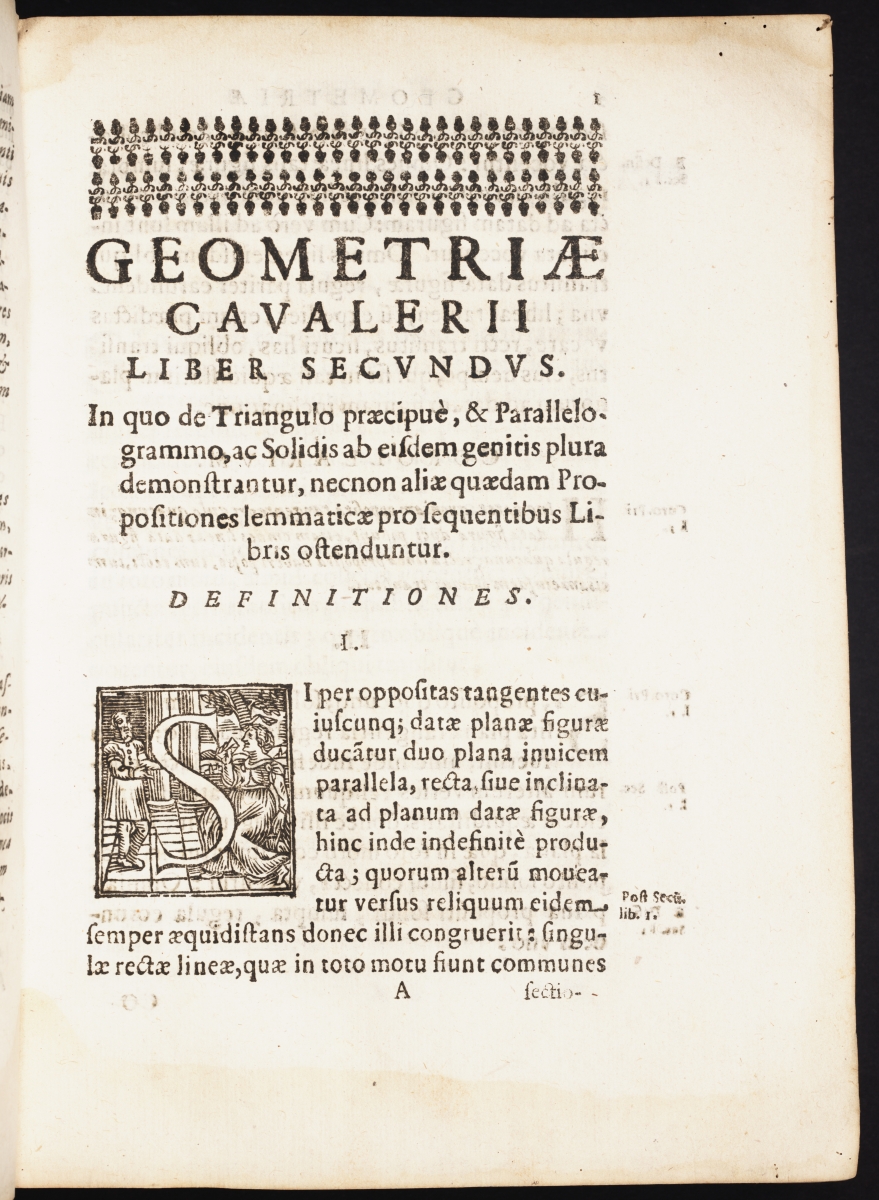
Book III:  Book IV:
Book IV: 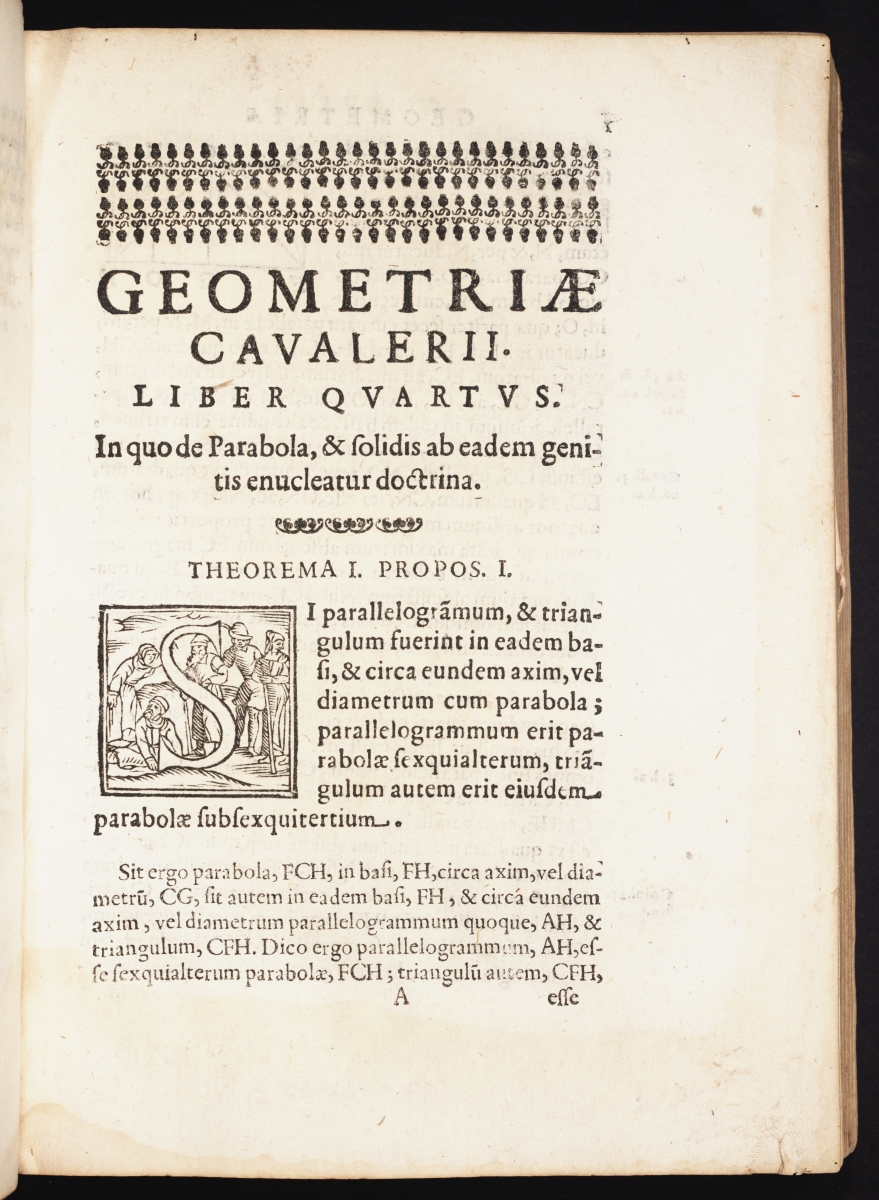
Book V: 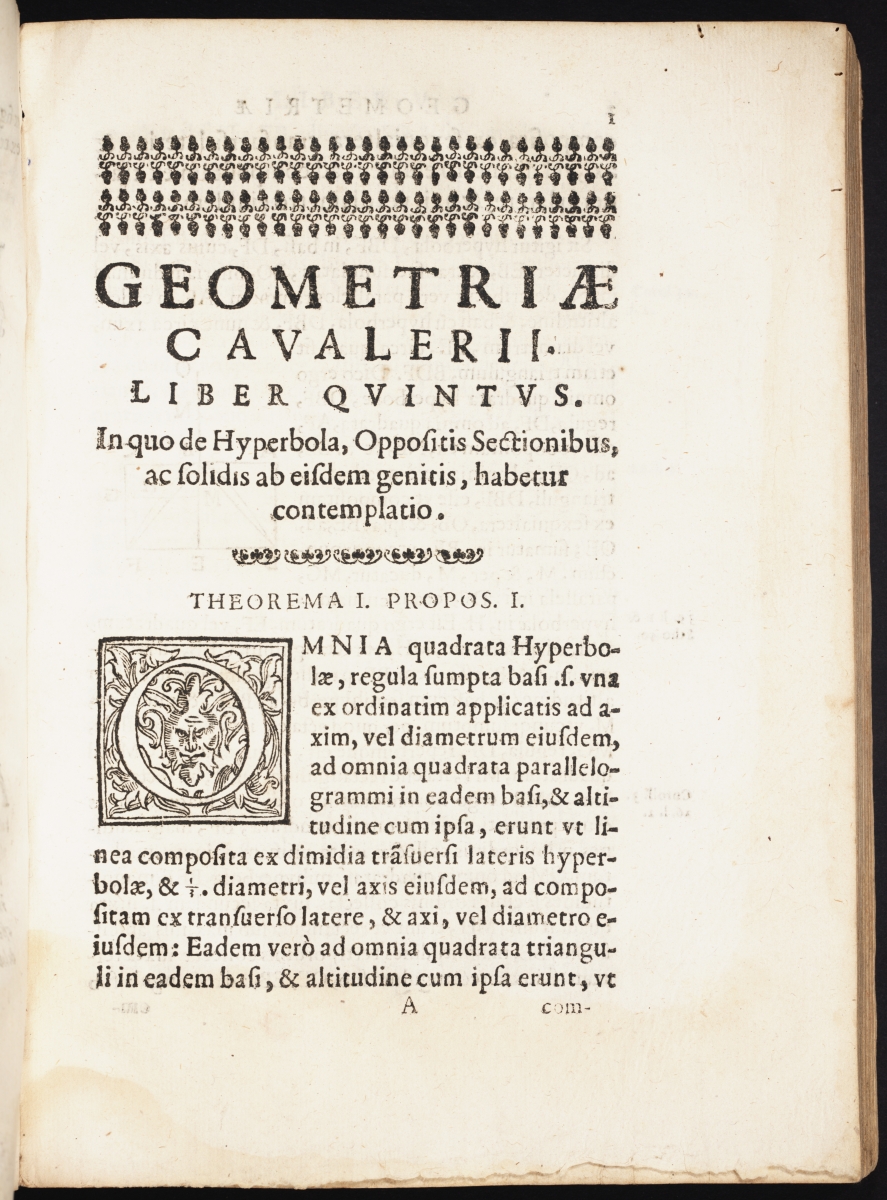 Book VI:
Book VI: 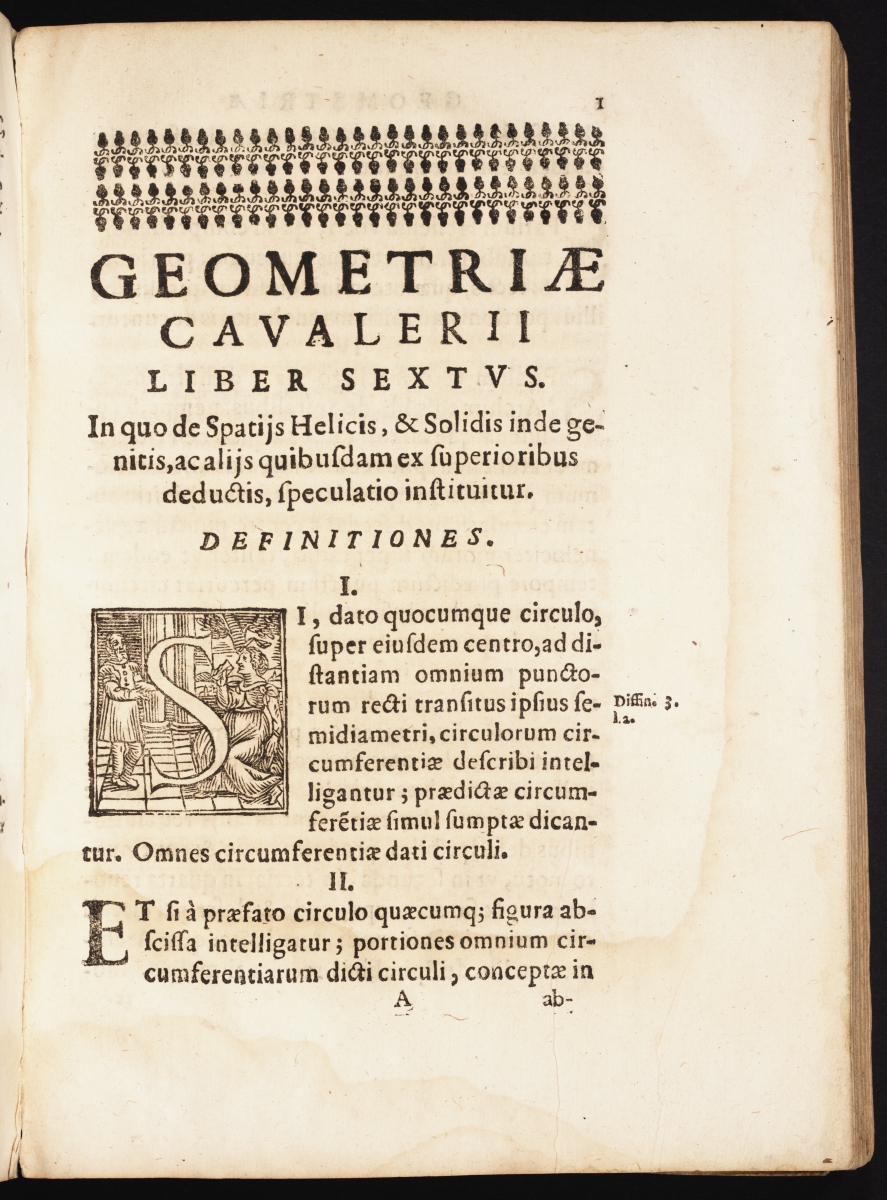
Book VII: 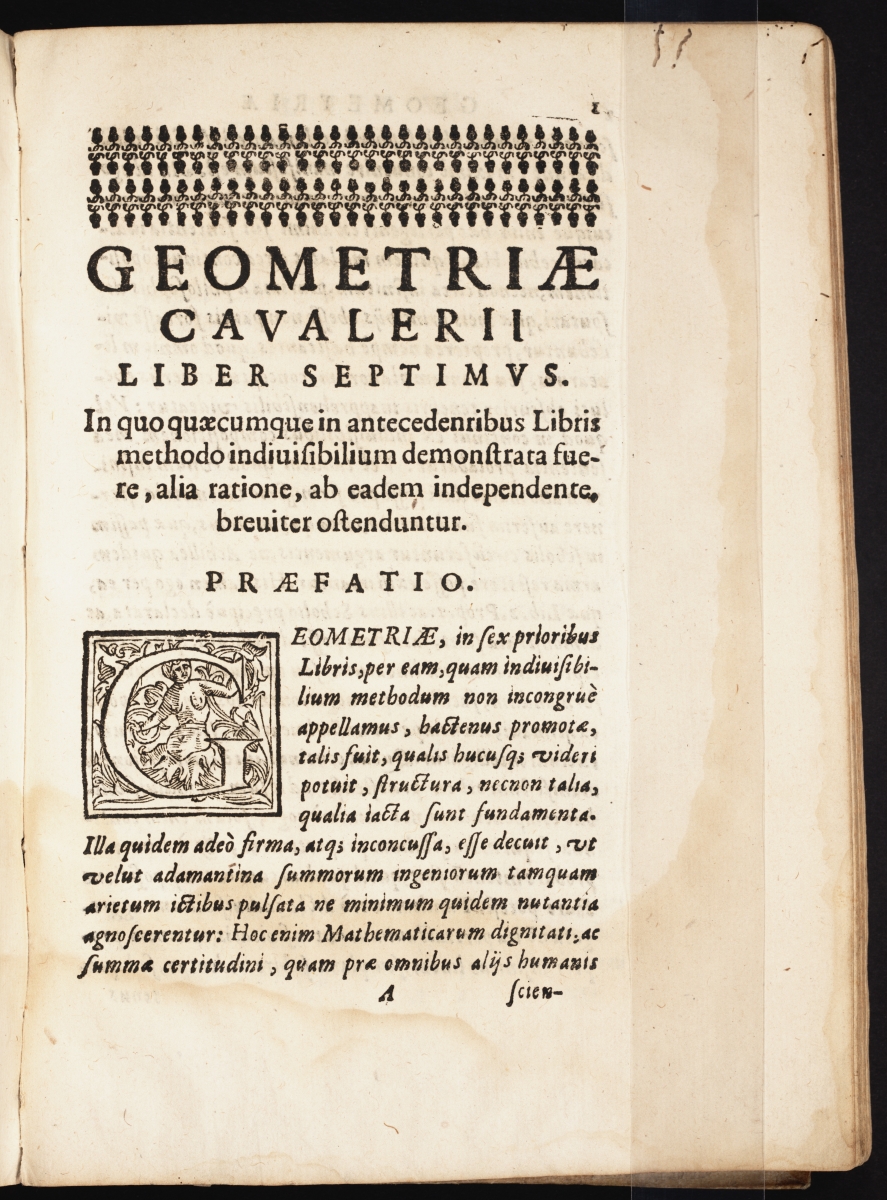
Below is proposition 3 of Book I (p. 21), which shows by construction that if a sphere is circumscribed by an arbitrary parallelogram, then opposite sides will be parallel.
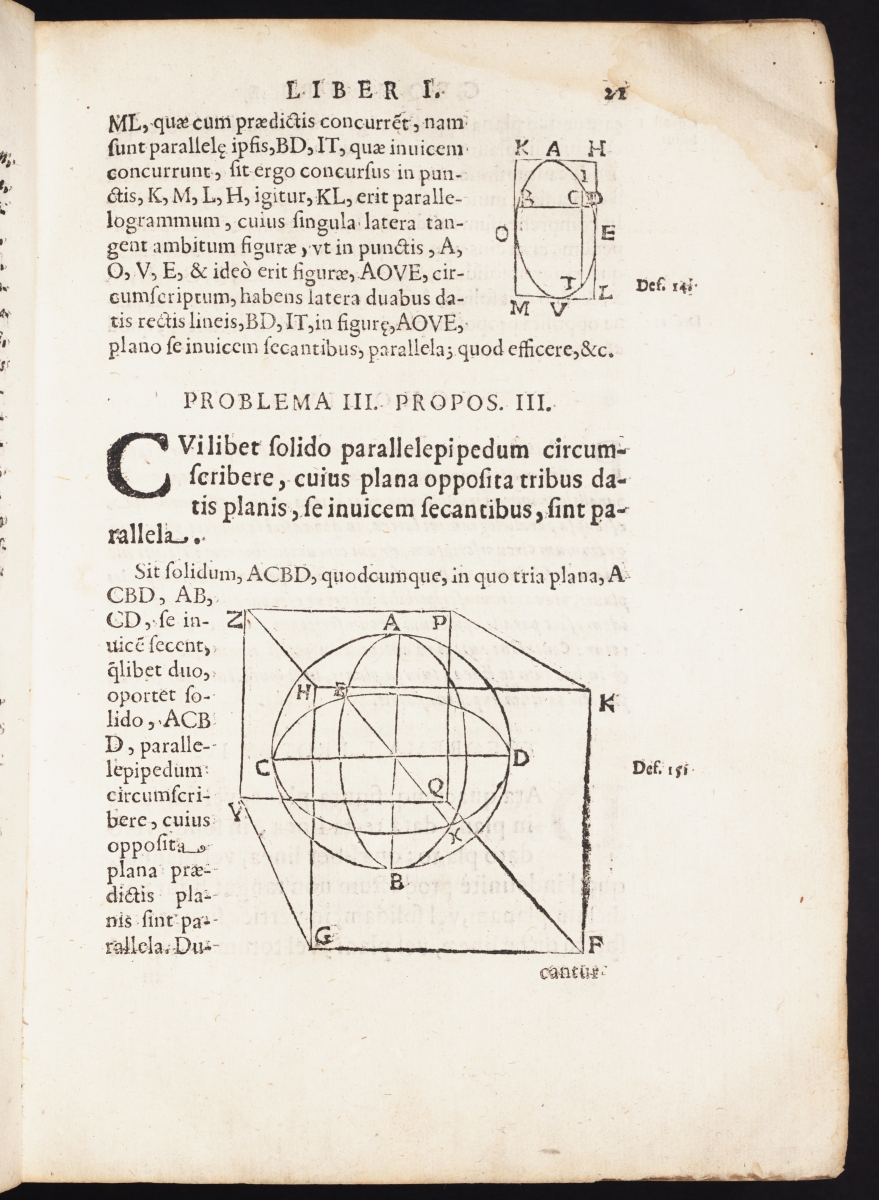
The basis for Cavalieri’s determination of areas and volumes, now known as Cavalieri’s Principle, is given as Theorem 1 of Book 7, pictured below.
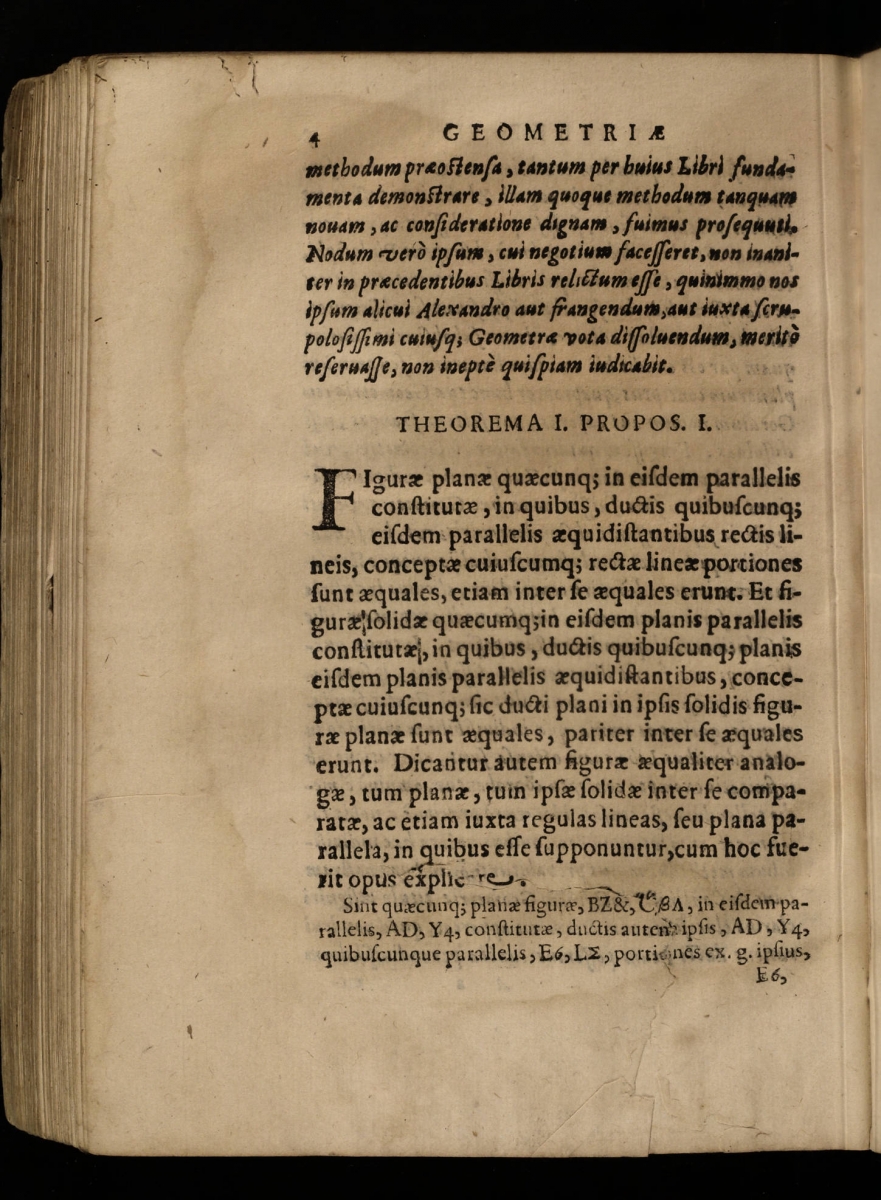
A complete digital scan of the Latin 1635 edition of Cavalieri’s Geometria indivisibilibus is available in the Linda Hall Library Digital Collections. The call number is QA33 .C359 1635.
Images in this article are courtesy of the Linda Hall Library of Science, Engineering & Technology and used with permission. The Linda Hall Library makes available all existing digital images from its collection that are in the public domain to be used for any purpose under the terms of a Creative Commons License CC by 4.0. The Library’s preferred credit line for all use is: “Courtesy of The Linda Hall Library of Science, Engineering & Technology.”
References
Carruccio, Ettore. “Cavalieri, Bonaventura.” In Dictionary of Scientific Biography, edited by C. C. Gillespie, iv:149–153. New York: Scribner, 1972.
Eves, Howard. Great Moments in Mathematics Before 1650. Mathematical Association of America, 1983, pp. 206–214.
O'Connor, J. J., and E. F. Robertson. “Bonaventura Francesco Cavalieri.” MacTutor History of Mathematics archive. http://www-history.mcs.st-and.ac.uk/history/Biographies/Cavalieri.html.
Cynthia J. Huffman (Pittsburg State University), "Mathematical Treasure: Cavalieri’s Geometria indivisibilibus," Convergence (July 2017)




